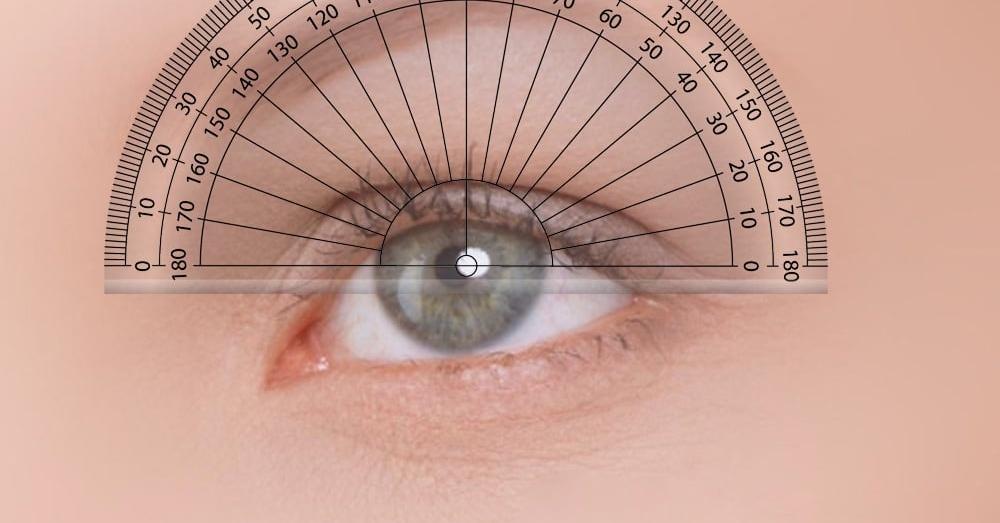Are you curious to know what is axis on eye prescription? You have come to the right place as I am going to tell you everything about axis on eye prescription in a very simple explanation. Without further discussion let’s begin to know what is axis on eye prescription?
Understanding your eye prescription can be a bit like deciphering a secret code, but it’s crucial for obtaining the right glasses or contact lenses. One of the key elements in an eye prescription is the “Axis.” In this guide, we’ll delve into the intricacies of the Axis, exploring its significance, how to interpret its numbers, and common questions related to this critical aspect of your prescription.
What Is Axis On Eye Prescription?
The Axis is a numerical value that indicates the orientation of astigmatism correction in your prescription. Astigmatism occurs when the cornea or lens of the eye has an irregular shape, causing blurred or distorted vision. The Axis helps optometrists and eyewear professionals precisely align astigmatism correction.
What Is The Axis Number On An Eye Prescription?
The Axis number, measured in degrees from 1 to 180, signifies the meridian of the eye where astigmatism correction is required. The Axis helps identify the specific direction in which the cylindrical power (Cyl) should be applied to correct astigmatism.
What Is Axis On My Eye Prescription?
When you see the Axis value on your eye prescription, it denotes the angle where the cylindrical correction is needed. This information ensures that the corrective lenses are appropriately aligned with the irregularities in your cornea or lens, optimizing your vision.
What Is 010 Axis On An Eye Prescription?
An Axis value of 010 means that the astigmatism correction is required at 10 degrees. The number indicates the angle in degrees along which the cylindrical correction should be applied for optimal vision correction.
What Is Normal Eye Axis?
There is no universal “normal” Axis, as it varies from person to person based on the orientation of their astigmatism. A normal eye Axis is whatever degree is indicated on your prescription to correct the specific astigmatism present in your eyes.
Understanding Sph, Cyl, And Axis In Eye Prescription:
- Sphere (Sph): Represents the overall lens power needed for nearsightedness or farsightedness.
- Cylinder (Cyl): Indicates the degree of astigmatism correction required.
- Axis: Specifies the direction (in degrees) along which the cylindrical correction is needed.
Eye Axis 10 Meaning:
An Axis value of 10 degrees means that the astigmatism correction is required along a specific meridian at 10 degrees. This precise measurement ensures that your corrective lenses align perfectly with the irregularities in your eyes.
No Axis On Eye Prescription:
If there is no Axis specified on your eye prescription, it means you do not have astigmatism, and the spherical correction is sufficient for your vision needs.
What Is Sph In Eye Prescription?
The Sphere (Sph) value indicates the overall lens power needed for nearsightedness (negative Sph) or farsightedness (positive Sph). It is a critical component of your prescription, working in conjunction with Cylinder and Axis to provide precise correction.
Visit Makemet to know more stuff like this.
Eye Cyl Normal Range:
The normal range for Cylinder (Cyl) in an eye prescription varies based on individual eyesight conditions. It typically falls within the range of -0.25 to -4.00 for mild to moderate astigmatism. Optometrists determine the appropriate Cyl value during an eye examination.
+.50 Glasses Prescription Meaning:
A +0.50 in the Sphere (Sph) portion of your prescription indicates a mild degree of farsightedness. The positive value means that you may struggle with near vision, and the prescription is designed to bring close-up objects into clearer focus.
Conclusion:
Cracking the code of your eye prescription involves understanding the significance of each component, with the Axis playing a crucial role in astigmatism correction. By comprehending what the Axis represents and how to interpret its values, you empower yourself to make informed decisions about your eyewear and ensure optimal vision correction tailored to your unique needs.
FAQ
What Is A Normal Axis For Eyes?
If you have “normal” eyesight, there would not be an axis number, as you would not have astigmatism. However, the most “normal” eyes with this condition would tend to have approximately 0.50 dioptres of negative cylinder power with a 180 axis number.
What Does An Axis Of 165 Mean?
The axis number helps your eye care professional know the direction in which they should position a cylindrical power in the lenses of your glass. For example, the number may be between 1 and 180, where 90 represents the vertical position while 180 represents the horizontal one.
What Does An Axis Of 175 Mean?
Axis is measured in degrees, and refers to where on the cornea the astigmatism is located. Axis numbers go from 0 to 180. If you think of the eye as a map hanging on a wall, the 90 degree axis or line, runs up and down (or north to south) on the eye. The 180 degree line runs across the eye, east to west.
What Is A Bad Astigmatism Axis?
75 and 2 diopters is considered mild astigmatism. Between 2 and 4 diopters is moderate astigmatism, and 4 or more diopters is considered significant or “bad” astigmatism. Generally, eyes with 1.5 diopters of astigmatism or more require correction.
I Have Covered All The Following Queries And Topics In The Above Article
What Is The Axis On Eye Prescription
What Is The Axis Number On Eye Prescription
What Is Axis On My Eye Prescription
What Is 010 Axis On Eye Prescription
What Is Normal Eye Axis
What Is Sph, Cyl And Axis In Eye Prescription
What Is Cyl In Eye Prescription
Eye Axis 10 Meaning
No Axis On Eye Prescription
What Is Sph In Eye Prescription
Eye Cyl Normal Range
+.50 Glasses Prescription Meaning
What Is Axis On Eye Prescription
